Sunday Nov 02, 2025
Sunday Nov 02, 2025
Thursday, 26 August 2021 00:10 - - {{hitsCtrl.values.hits}}
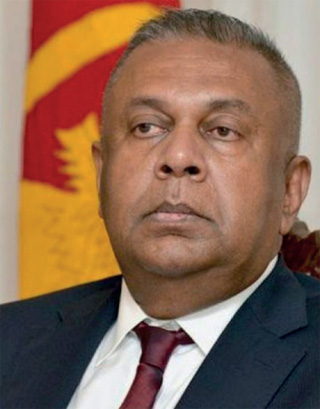
Mangala Samaraweera’s death at 65 indicts the regime’s anti-COVID policy; it is a zero-compassion policy
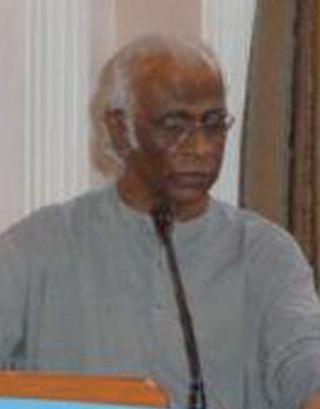
Susil Siriwardena was a passionate ideologue and advocate of the Premadasa philosophy of development

In ‘Representing Sri Lanka,’ Prof. Rajiva Wijesinha records what happened on the accountability issue at the highest level
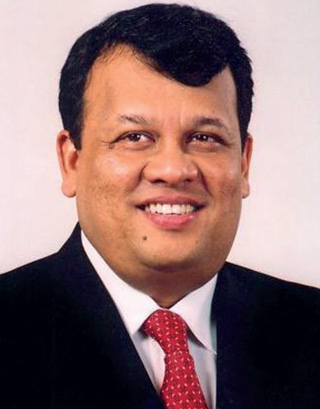
Former Minister of Human Rights Mahinda Samarasinghe was unable to stave off defeat at UNHRC sessions
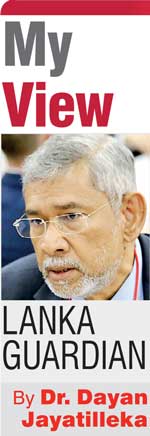 Society’s salute to Mangala Samaraweera is a legitimate celebration of his libertarian free-spirit and a legitimate protest against the grim, grey ethos of militarist-autocracy. Though Mangala and I were on opposite sides of the barricades except episodically, I will miss his zestful cultural iconoclasm.
Society’s salute to Mangala Samaraweera is a legitimate celebration of his libertarian free-spirit and a legitimate protest against the grim, grey ethos of militarist-autocracy. Though Mangala and I were on opposite sides of the barricades except episodically, I will miss his zestful cultural iconoclasm.
His death at 65 indicts the regime’s anti-COVID policy. It is a zero-compassion policy. Only in paragraph 7 of President Gotabaya Rajapaksa’s address to the nation on 20 August does one encounter the word “deaths” (as in “…patients and deaths”). There is a second and final reference to “those who passed away” in paragraph 34 of his 36-paragraph speech.
Susil Siriwardena: Engaged intellectual
Susil Siriwardena died this week. He was one of my boyhood heroes. A cousin of the Bandaranaikes (on SWRD’s side), an Oxfordian and attendee at Dr. Kissinger’s Harvard seminar who had aced the elite Ceylon Civil Service examination, Susil turned traitor to his class and became a revolutionary. Returning from London, he had clandestine discussions with Rohana Wijeweera and was sympathetic to the JVP’s cause though he (and the brilliant Viraj Fernando) concluded it was ‘petty bourgeois’. Jailed in 1971 he was released by the Criminal Justice Commission (CJC) after serving one-and-a-half years.
I read Susil Siriwardena before I saw him. As Editor, Daily News my father had the files of all the statements made by the accused in the CJC’s ‘main case’ of 1972, including the massive tome of Rohana Wijeweera’s. As a 15-year-old who had been reading Marxism since 13, and been in Berlin in May ’68 with my parents at age 11, I studiously read all the statements. Susil Siriwardena’s was the most impressive. My father confided that the IGP, Ana Seneviratne, his classmate at Royal, had told him how impressed the CID officers had been when they saw Susil’s library.
I was an A Level student the first time I saw him. I was addressing a May Day meeting in an inner-city hall. He entered, in his handloom tunic, sarong, and sandals, with a cloth sling-bag stuffed with ‘Mawatha,’ the path-breaking progressive literary journal he founded and co-edited. Susil took stacks of the periodical on his scooter to sell at Left gatherings.
I first heard him in 1977 when he presented an extended report on his troubling visit to Jaffna, at a conclave of the Social Scientists Association (SSA).
When (typically) none in the UNP Cabinet of 1977 wanted him in their Ministries because of his radicalism, Minister of Housing Ranasinghe Premadasa intervened (typically), saying: “So he wants to change the world overnight? Give him to me.”
Susil became Chairman of the National Housing Development Authority and Commissioner, Janasaviya, Premadasa’s two lead projects. He was a passionate ideologue, advocate and defender of the Premadasa philosophy of development. He related how Premadasa’s winning manifesto ‘New Vision, New Deal’ was written. Premadasa was returning from China having observed Deng Hsiaoping’s reforms, and instructed Susil to join him in Hong Kong. Booked into connecting hotel rooms, Premadasa would pace up and down dictating his ideas to Susil who would produce a draft. After eight drafts, Premadasa was satisfied.
Though I’d had an unforgettably, warm, substantive encounter with Premadasa at Sucharitha in Feb 1989, it was Susil who urged, together with Dr. Lal Jayawardena, at Prof. Kumari Jayawardena’s home, my first long policy memorandum for Premadasa, collected it at Kumari’s, and handed it to him.
A highly literate radical thinker, Susil found a very real revolution, and revolutionary romance, in Premadasa’s development revolution, and his real revolutionary leader in Premadasa, not Wijeweera. Susil was a Field Commander of Premadasa’s revolutionary war against poverty. Never proceeding to a PhD and never regretting it, Susil stayed steadfast at Premadasa’s side until his assassination by a Tiger suicide-bomber.
Though his cousin Chandrika was President, Susil chose in 1994 to join, as did Bradman Weerakoon, the Board of the Premadasa Center chaired by Sirisena Cooray, of which I was the first Executive Director.
When my father died in 1999, Susil wrote an admiring evaluation to the newspapers, urging an anthology each, for the genres into which his writings were separable.
Susil was an “engaged” or “committed” intellectual in the Sartrean sense. In the Gramscian discourse he was a “traditional intellectual” who became an “organic intellectual”. In the lexicon of Amilcar Cabral, he “committed class suicide” to be reborn on the side of the people.
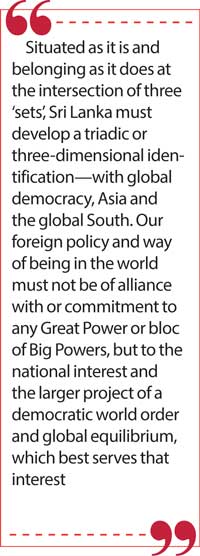 Grasping Geneva
Grasping Geneva
There are three models of (and for) Sri Lanka at the UNHRC, Geneva.
(I) Success/Victory: 2009
(II) Failure/Defeat: 2012, 2013, 2014, 2021
(III) Surrender/Subalternity: 2015
Afghanistan proves that in South Asia in particular, and the global South in general, no government, even an elected one, perceived a puppet or proxy of the West will retain its national legitimacy.
The authorship and co-sponsorship in 2015 by Prime Minister Wickremesinghe of UNHRC Resolution 30/1 with its ‘foreign judges’ clause, was to the electoral ‘end of history’ of the UNP (2020) what Pearl Harbour (1941) was to Hiroshima (1945).
However, the crisis of Sri Lankan foreign policy in general and diplomacy in Geneva in particular, antedated the 2015 resolution. Prof. Rajiva Wijesinha’s mini-memoir, ‘Representing Sri Lanka’ (S. Godage & Brothers, 2021), doubles as post-mortem.
He begins his Geneva story with a (generous) reference to my appointment to Geneva in 2007:
“…But Dayan then ensured I was available to him in Geneva. His appointment was, apart from making Gotabaya Rajapaksa his Secretary of Defence, Mahinda Rajapaksa’s most inspired selection. Where Gotabaya led the fight to overcome the LTTE, Dayan led the fight to overcome those who wanted to help them survive through international pressures. His strategy and his tactics were excellent, but sadly he has not been appreciated enough in this country though there has been international recognition of his singular achievement.” (Part 1 – Winning the World, Chapter 1, The Human Rights Council in Geneva 2007, p 13.)
Rajiva recounts the dramatic interactive spiral on the diplomatic and military fronts:
“I was summoned back to Geneva the day after Mahinda [Samarasinghe]’s second dinner which took place on May 10th [2009]. Dayan had gathered that the British and their allies – the Americans now actively amongst them for Hillary Clinton, whose campaign the LTTE fronts had helped finance, was now their Secretary of State and had begun to move away from the relevant neutrality the US had evinced previously – were gathering signatures to summon a special session of the Council to stymie us. This was initially planned to stop us finally finishing off the LTTE, but we moved swifter than they had anticipated. [Indian High Commissioner in Colombo] Alok [Prasad] had indicated to me earlier that we should finish the war before the Indian election for there was a worry that the Government might change and the solid support the Congress had provided us with would reduce. But as it happened the Congress came back to power, which is why it was truly shocking that our Government, after the war, did not fulfil its commitments to them.” (Chapter 6, p 83)
Prof. Wijesinha records what happened on the accountability issue at the highest level in Sri Lanka, which I was unaware of but was the only one to sound a cautionary note on when I did come to know it (contrary to Sarath Weerasekara’s diatribes against me).
“I had then to fly to Geneva, on the night of the [May] 23rd [2009] but before that attended the dinner in Kandy which the President gave for Ban ki-Moon who had come to Sri Lanka in the aftermath of the war victory. When I got there he was closeted with Foreign Ministry officials, drafting a communique which was long delayed. When they finally emerged, I was a bit startled at the text since it seemed to give an opening for future interference and criticism. But Prasad Kariyawasam confidently assured me that there was no problem about what had been agreed. Later in Geneva, whereas neither Mahinda Samarasinghe nor Mohan Peiris seemed to understand the implications, Dayan noted that they might lead to difficulties afterwards. But he was told from Colombo that the Government stood by what had been signed and he should proceed on that basis. Palitha Kohona, who was Secretary to the Ministry at the time, told me that he had wondered but the President was impatient to get on with the dinner and had told them that the text produced after much discussion could be signed. It was a great pity that Palitha, if he had expressed doubts, had not been more forceful and also told those of us going to Geneva to exercise caution about this.” (Chapter 6, The triumph in Geneva and the seeds of future failure, p 87.)
What happened four days later in Geneva had been already retold in his Preface by Prof. Wijesinha:
“…led primarily by Dayan Jayatilleka, our Permanent Representative in Geneva, we achieved a lot and managed in 2009, when the West summoned a Special Session of the United Nations Human Rights Council to crucify us, to defeat them convincingly.” (Preface, p 9.)
Rajiva discovered who aborted the implementation of the LLRC Report’s recommendations:
“It had only been after the appointment by Ban ki-Moon of the Darusman Panel that the President finally appointed the Lessons Learnt and Reconciliation Commission. But under its capable Chairman C.R. de Silva it worked quickly and issued some Interim Recommendations well before the Darusman Panel issued its own scathing report. But, though Mohan [Peiris] was straight away appointed to chair a committee to work on those recommendations, the committee never met, and in fact he finally confessed to me, having said for weeks that he was trying to get a date from Gotabaya Rajapaksa for the committee to meet, that Gotabaya did not want that to happen…” (Chapter 7, p 108)
Referring to my removal mere weeks after our success in Geneva, Rajiva trenchantly concludes: “In July [2009] Dayan was removed from Geneva. It was the silliest thing Mahinda Rajapaksa did in what was to prove a progressively more tragic destruction of his own great achievement in defeating the LTTE with the approbation of much of the world.” (Part 2 – Slow self-destruction in Geneva and Colombo, Chapter 7 – A dismantling of defences, p. 94)
Having recounted the rise, Rajiva’s memoir records and relives the fall—the first of the long downswing:
“I left the day after that rather sad meeting at Tamara [Kunanayakam]’s on March 20th [2012], before the vote at which the Americans mustered a solid majority against us, though nothing like as big as Dayan had achieved in 2009 with much more limited personnel and resources.” (Chapter 8, p 123)
Mahinda Samarasinghe’s misreading
Former Minister of Human Rights Mahinda Samarasinghe, reviewing his ex-Secretary (and greatest asset) Prof. Rajiva Wijesinha’s memoir, writes last week as follows:
“An unfortunate reality is the near destruction of the G-77 and the NAM as spheres of significant influence in the modern era in favour of a unipolar world that does not cater primarily to the needs of the global south. The alliances such as that creditably achieved in May 2009 proved momentary, ephemeral and fleeting.” (Sunday Times)
Anyone who speaks of a ‘unipolar world’ as a global reality or even a prospect/potentiality today, is unaware that the main question in current world history is the Great Power contestation between the USA and China. In his ‘unipolar world’, which country constitutes that single ‘polarity’? The USA or China?
In reality it is a bipolar world—US vs. China—and in military strategic terms, a tripolar world, with Russia being the USA’s near-equal as a nuclear power.
As for the “momentary, ephemeral and fleeting nature” of our alliances in 2009, they ensured time and space for three full years thereafter, to get things right. The endurance of those alliances was contingent on fulfilling our international pledges (including those articulated by Minister Samarasinghe at the UNHRC). Had we done so, we wouldn’t have lost India, South Africa and many states that actively supported us in 2009.
Heading the delegation to Geneva in 2012, Minister Samarasinghe was unable to stave off the first disastrous defeat, let alone mobilise anything remotely like the support Sri Lanka registered three years before. He also attended the UNHRC sessions of 2013 and 2014 at which SL was defeated by increasing margins.
 Foreign policy framework
Foreign policy framework
The character of international politics is protean or ‘anarchic’ (as the Realist school has it) and convergences can be kaleidoscopic. For a small state, coalitions often have to be constructed in pursuit of its national interest in a specific situation, at a particular moment or ‘concrete conjuncture’, though they may be “momentary, ephemeral and fleeting”. An excellent example is the coalition that came together in support of Madam Bandaranaike’s Ceylon during the ultra-left JVP insurrection of April 1971. It ranged from the USA and UK, to Russia and China, through India, Pakistan and Yugoslavia.
Bipolarity/tri-polarity gives the global South including Sri Lanka, the option of greater autonomy, provided it abandons alignment, and retrieves its traditional capacity for intense international engagement and ambidextrous balancing—not to be confused with ‘equidistance’, still less neutrality.
As a small state, Sri Lanka is too vulnerable to be a ‘free-floater’, or to align with, as distinct from tangentially ‘tilt’ to, one or the other contending bloc or Great Power. Therefore, it must remain within in its ‘extended family’ the NAM, of which it was a founder member in 1961, and which remains the largest grouping—however dormant—in the UN system. (This is certainly what Lakshman Kadirgamar, our finest Foreign Minister, would have continued to do.)
Sri Lanka’s markets lie in the West and its investment flows come from the East. The accountability pressure on it comes from the North/West and its counterbalancing capability is located in the South/East.
Sri Lanka’s foreign policy must flexibly engage all around the international compass, with all powers while committed to none, and prise open as much participatory space as possible for itself in the interstices of the crisis-ridden, transitional and reconfiguring global system.
Nonalignment as principle and as Movement arose when the world was polarised into contending power-blocs during the Cold War and Great Power contest in the 20th century. They served Sri Lanka’s national interest well, and when we deviated from it in the 1980s we paid the heaviest price. Today, with the onset of a quasi-Cold War, and a new Great Power military rivalry, the principles of Nonalignment provide valuable parameters and require rebooting.
Situated as it is and belonging as it does at the intersection of three ‘sets’, Sri Lanka must develop a triadic or three-dimensional identification—with global democracy, Asia and the global South.
Our foreign policy and way of being in the world must not be of alliance with or commitment to any Great Power or bloc of Big Powers, but to the national interest and the larger project of a democratic world order and global equilibrium, which best serves that interest.